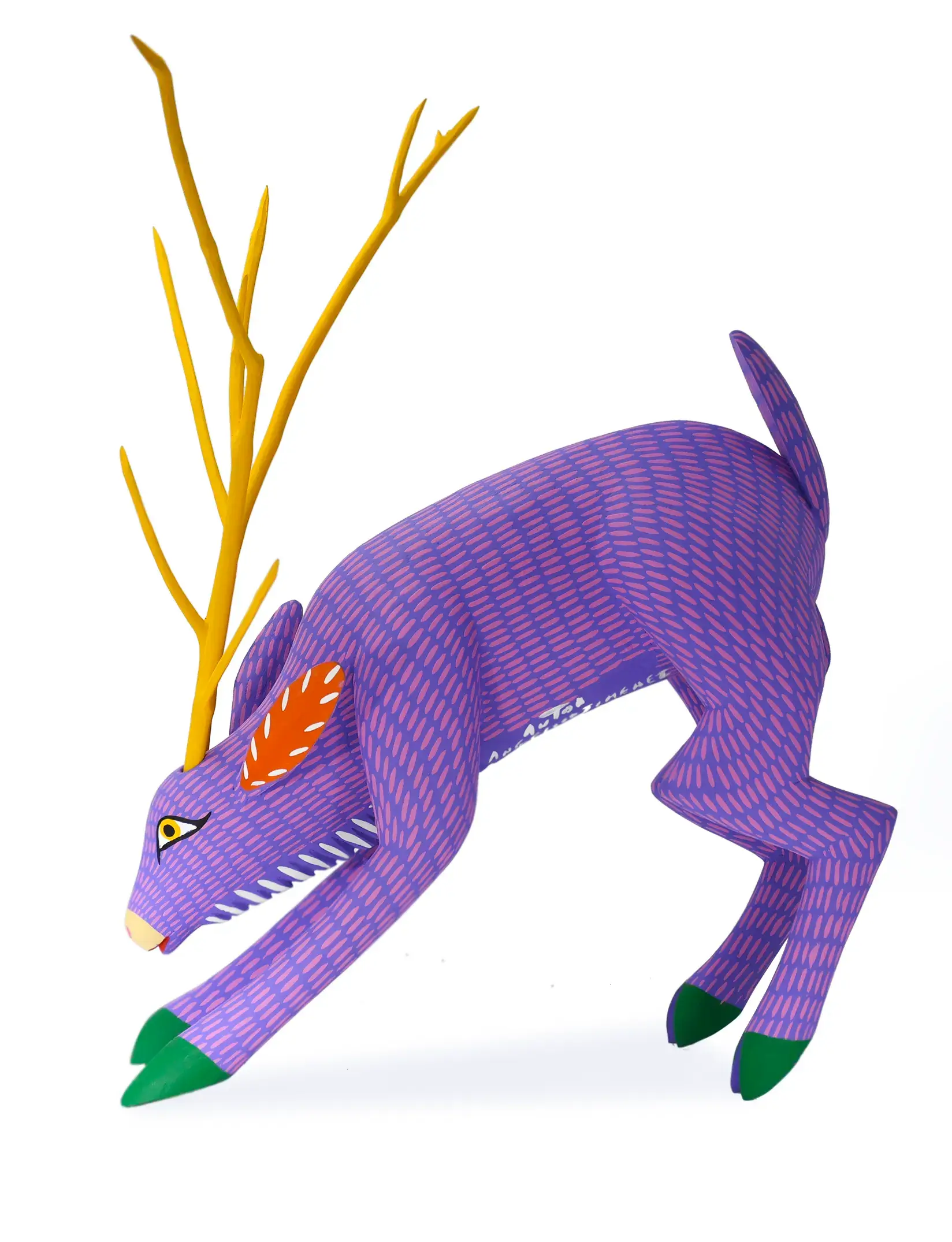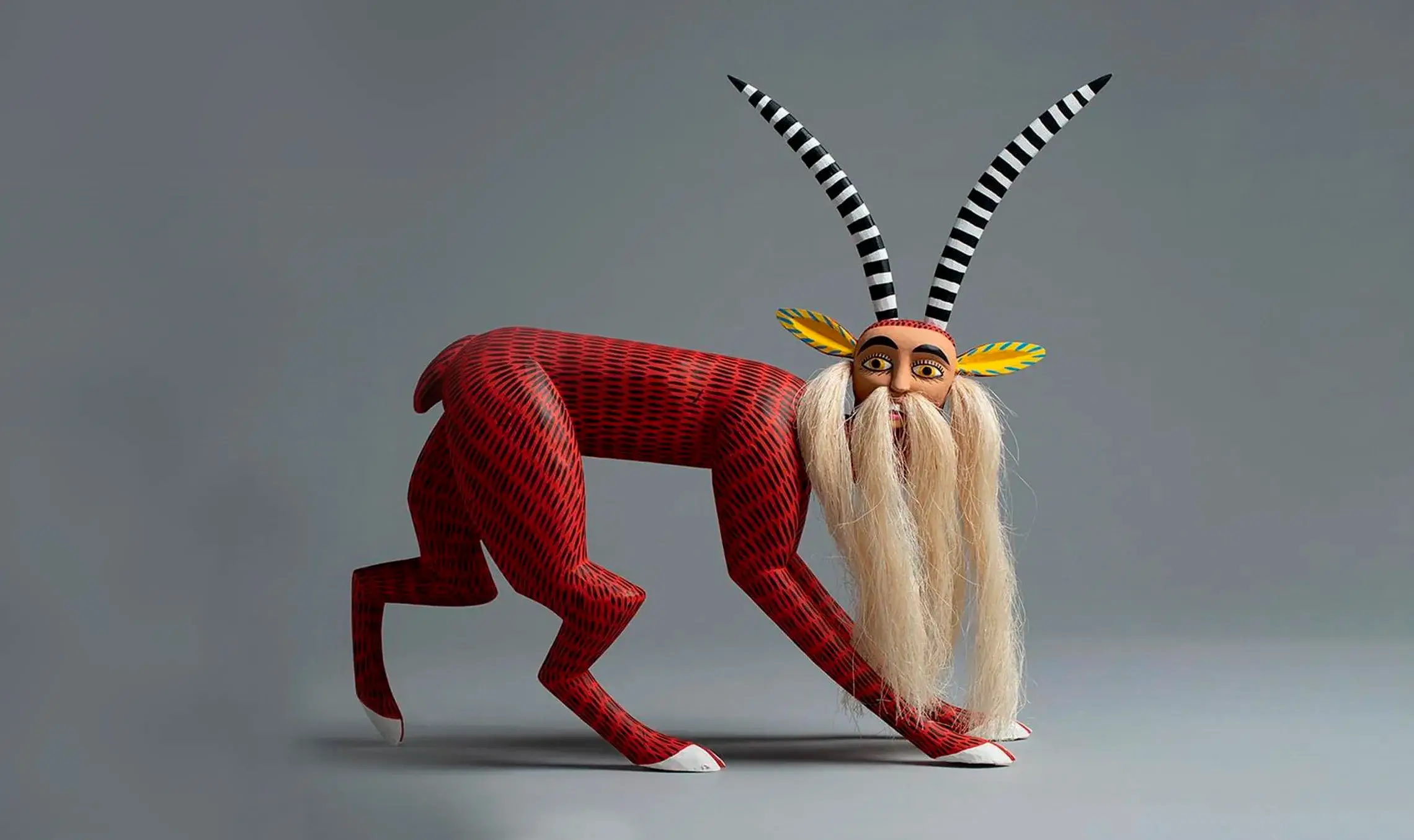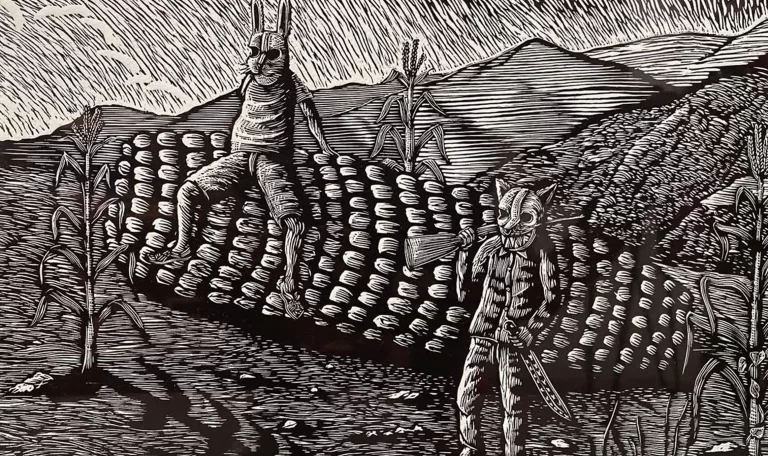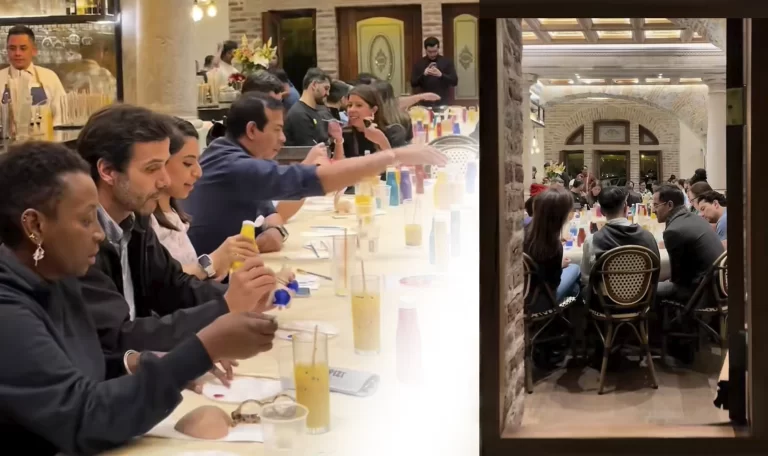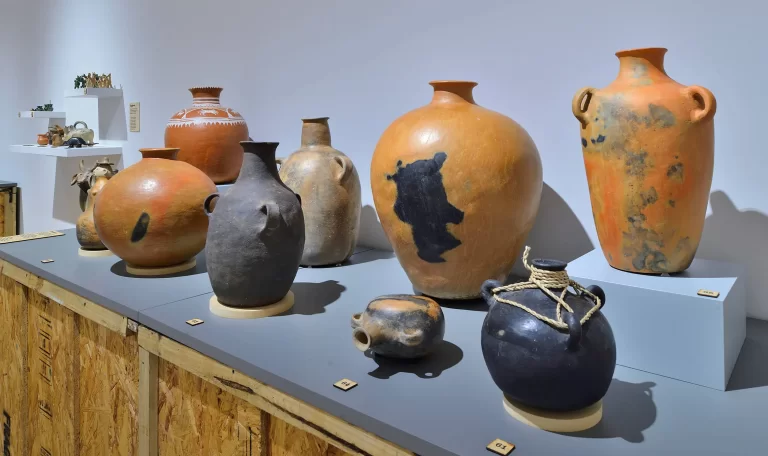In Mexico, a country full of culture and tradition, alebrijes have become a symbol of identity and creativity. Their vivid colors and sinuous shapes, inspired by nature and dreams, add mysticism to this popular art. Originating in Mexico City, alebrijes found their second home in Oaxaca, where they merged with the ancestral technique of wood carving, creating a unique artisan tradition.
The Origin of Alebrijes
The term “alebrije” was born from a dream of cartonero Pedro Linares López in 1936. While he was ill, he dreamed of a forest full of fantastic creatures that shouted “Alebrijes! Alebrijes!” These dreamlike figures, a mixture of different animals, inspired him to recreate them with cardboard and papier-mâché, using traditional cartonería techniques. The first alebrijes were light creatures, painted with vibrant colors and geometric patterns.
The Arrival of the Alebrije in Oaxaca
The Oaxacan tradition of alebrijes began when artisans from the state adapted this idea and combined it with their own wood carving techniques, particularly in San Antonio Arrazola and San Martin Tilcajete. This occurred due to the cultural exchange between artists and artisans from different regions of Mexico. Copal wood, abundant in Oaxaca, was the material chosen to carve these figures, as it is easy to work with and has spiritual properties in indigenous communities.
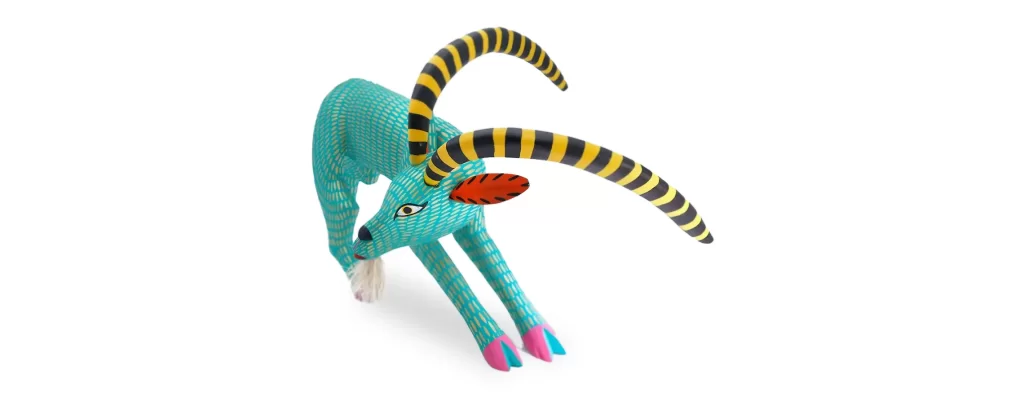
Manuel Jiménez: The Father of the Oaxacan Alebrije
Manuel Jiménez, born in 1919 in San Antonio Arrazola, is considered the pioneer of the alebrijes carved in wood. Since he was a child, Manuel showed interest in artistic creation. As he himself recounted, his first approach to craftsmanship was modeling animals in clay while caring for the animals on his farm. However, the climatic conditions of the Sierra and the fragility of clay led him to search for more durable materials. Thus he discovered copal wood, which became the basis of his art.
Over time, Manuel combined the local carving tradition with the idea of Pedro Linares’ alebrijes, creating figures that represented real and imaginary animals. These pieces were not only sculptures; they were stories, dreams and a reflection of the Oaxacan landscape and cosmovision. Even without abandoning the original animals with which he began his work, Jiménez’s work influenced generations of artisans who followed in his footsteps, transforming Oaxaca into the cradle of wood-carved alebrijes.
Alebrijes and Their Spiritual Meaning
Alebrijes are not only decorative pieces; they have a deep spiritual meaning. They represent spiritual guides and protectors, connecting the artisan and the owner with the world of dreams and nature. Hummingbirds, salamanders, snakes and animal figures such as tigers, goats, frogs, deer and elephants are some of the most popular forms, each with its own symbolic charge. For example, hummingbirds are seen as messengers of the gods, while salamanders represent resistance and regeneration.
From Oaxaca to the World
Today, Oaxacan alebrijes are recognized worldwide as emblems of Mexican folk art. Their elaboration combines traditional techniques with contemporary creativity. The figures are carefully carved from copal wood, sanded to a smooth surface, and then painted with bright colors and patterns that evoke nature, dreams and emotions.
DeCorazón México, a project that spreads the Traditional Alebrije
Currently, Manuel Jiménez’s sons, Isaías and Angélico, continue with their father’s legacy, copying the pieces that began this tradition many years ago. With years of practice and dedication to their work, they are not only dedicated to reproducing the original designs such as deer, frogs and nahuales, but they also combine the woodworking technique of the machete with painting the Zapotec and Mixtec fretwork of the traditional alebrijes. You can find their work at DeCorazón México, located at Plaza San Jacinto 20, Colonia San Ángel.
